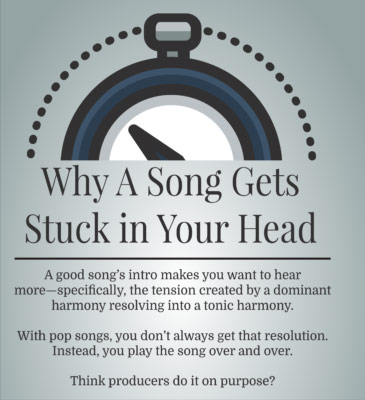Most music picks a side — capitalist gloss or outlier grit. Vaporwave is the deconstruction and remarriage of both.
Relatively new, relatively unknown, vaporwave is part meme, part mood music, and part mathematics.
Its headliners dive into the technical aspects of cultural touchstones, like the whirring of drones or 20th-century music icons. Songs are titled in half-Japanese characters and given suprascript trademark notations, despite song titles as a whole being ineligible for U.S. trademark.
At home on Reddit and Bandcamp, vaporwave is in on the joke. Everyone has their racket in capitalist America — even vaporwave’s vanguard, like Vektroid or James Ferraro — but it can still be technically beautiful and artistically compelling.
It just might need to be chopped and screwed to get there.
Vaporwave’s Masterpiece
The queen of vaporwave is Ramona Andra Xavier, who creates under a cloud of names — Vektroid, MACINTOSH PLUS, and 情報デスクVIRTUAL. The caps are not so much shouting as brand styling. If it seems like satire, it’s still serious business.
The leading single of Xavier’s masterpiece album, FLORAL SHOPPE by MACINTOSH PLUS, is リサフランク420 / 現代のコンピュ. It is a masterpiece in the antiquated sense of being the piece that made its creator a master. She, in turn, put vaporwave on the map.
The song is, in simplistic terms, a remix of Diana Ross’ It’s Your Move.
Ross’ original 1984 track is bubble-gum snappy and post-disco slick. MACINTOSH PLUS’ version echoes with gated reverb, that signature, synth twang of the ‘80s. It could be the soundtrack to a premium-cable skin flick. It could be Sunday dinner music.
The Harmony of Pop Songs
The two don’t seem comparable, but if they were, Diana Ross’ It’s Your Move — once a pleasing pop ditty — suddenly sounds like it belongs on the speaker system in a big-box retailer.
This is where vaporwave shows its chops, in the correction of unresolved harmonic tension that nags at the listener, long after the song is over. Some might call a song that gets stuck in your head “catchy,” but that’s because the tonic-dominant relationship is disharmonic.

Pay attention next time this happens to you. The song feels like it needs more time or a few extra notes to finish. Check how many seconds of the song you repeat in your head (we recommend using Aigai for its small second hand). The next bars are where the disharmony begins.
In the 1980’s, when Diana Ross released It’s Your Move, listeners who had the song stuck in their head would either have to wait for MTV or the radio to replay the song — or go to the store and buy the cassette tape.
Vaporwave knows pop tunes are designed this way. It flaunts its anti-commercialism by re-purposing an artwork meant for commercial consumption into one meant for personal appreciation and social commentary.
Chopped and Screwed
The technique is called “chopped and screwed” and was invented by DJ Screw in Houston. His Screwed Up Click counts as affiliates the rugged, yet melodic UGK and super-chill Devin the Dude.
The moves included playing the same record on two turntables on a delay, moving the crossfader side to side, slowing a song’s tempo to 60 to 70 quarter-note beats per minute, skipping beats, record scratching, and stop-time interruptions.
DJ Screw died in 2000 of a codeine overdose, but his example persists throughout Southern rap.
Producers still lean back with cups of sizzurp or purple drank, a potent mix of grape soda and codeine syrup. They call the beats “slowed-and-throwed” now, too — but they’re the same techniques young middle American hipsters now call vaporwave.
How A Song Gets Stuck in Your Head
aka The Tonic-Dominant Relationship
It’s Your Move is a fairly standard pop tune. It follows a formula of three main sections —verse, pre-chorus, and chorus. It gives you lots of the chorus, especially at the end, and it stays under four minutes.
Where it becomes notable is its tonality. The tonic–dominant relationship is the most important harmonic relationship in tonal music, because, as a general rule, it establishes the key.
The key of It’s Your Move is unambiguously G major, although we don’t hear tonic triad—the G-major chord—until the beginning of the verse.
When you hear the harsh dominant-chord — D major, in this instance — resolve into the stable tonic-chord — again, G major — you know where “home base” is.
Consider the intro’s chord progression against the full chorus’ chord progression.
Intro
Am9 – Bm7 – Am9 – Bm7 –Am9 –Bm7 –F#madd4 – (Am7) – D
Full chorus
Am9 – Bm7 – Am9 – Bm7 –Am9 – Bm7 – F#madd4 – B7
Am9 – Bm7 – Am9 – Bm7 –Am9 – Bm7 – F#madd4 – (C) – D

The tonic triad — G major, don’t forget — is never heard throughout the chorus, but the dominant D major triad heard at the end—and hinted at with the Bm7 chord (its top three notes form a D major triad)—demands it.
This tonal introduction creates the desire to hear more—specifically, to hear the tension created by the dominant harmony resolving into the comfort of the tonic triad. But this progression appears exclusively in the verse.
The intro also becomes the chorus, which appears at the very end of the song. The listener never gets a sense of closure with a final statement of the dominant-tonic resolution. The lack of finality is exacerbated by a chorus repeated so often, the verse becomes a distant memory.
In a song lasting 3:28, the last exposure to the tonic chord is at 1:20. The final two-thirds of the song avoid the crucial chord progression to resolve the harmonic tension. It’s Your Move even ends with a fade-out, so that its creators breeze past the need for a technically balanced conclusion.
The song doesn’t end based on the natural human experience of harmony. The only place to find closure is back at the 1:20 mark, so you play the song again. And again. And again.
Some might call this a calculated move to sell tapes in the 1980s. The listener had to hear it again — but only because the tonic-dominant relationship remains unresolved for most.
Vaporwave’s Balancing Act
By comparison, the MACINTOSH PLUS track modulates from a key of D major to G major, creating a large-scale dominant-to-tonic resolution.
The initial key comes by slowing down Diana Ross’ track to 3/4 of the original value. Later, the remix is slowed again to 2/3 the previous tempo — or one-half the tempo of It’s Your Move, stretching Ross’s tune down an octave and back to her key of G major.
This dominant-to-tonic modulation results in a more comforting and more stable ending than It’s Your Move.
It doesn’t hurt, either, that the last time a tonic chord appears in リサフランク420 / 現代のコンピュ is at 7:05, only a few seconds before the song ends.
In other words, It’s Your Move is still a great pop song, but リサフランク420 / 現代のコンピュ is the superior technical composition. Not bad for a relatively unknown genre.

